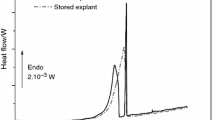Abstract
Scar formation and wound non-healing often occur during wound repair after skin injury, which are still unresolved. Clinic indicated that the structure played an important role in the wound repair. Our previous research showed that the wound over-healed (scar formation) when the integrity and continuity of dermal tissues was destroyed by injury. Other evidences showed that wound healing was impaired in diabetes because the underlying alternation in their skin tissues occurred caused by advanced glycation end products (AGES) aggregation. In order to explore the changes of the structure of skin at nanoscale, the small angle X-ray scattering (SAXS), compared with transmission electron microscopy (TEM), was applied to observe the skin in different pathological status. The results showed that there were some regular patterns in the structure of dermal tissue. The patterns were changed by different pathological status, which would result in wound healing disorder. These will be beneficial for clarifying the pathological mechanisms of wound healing.









Similar content being viewed by others
References
Martin P (1997) Wound healing-aiming for perfect skin regeneration. Science 276(5309):75–81
Zhou H, You C, Wang X, Jin R, Wu P, Li Q et al (2017) The progress and challenges for dermal regeneration in tissue engineering. J Biomed Mater Res A 105(4):1208–1218
Jackson DM (1953) The diagnosis of the depth of burning. Br J Surg 40(164):588–596
Skouge JW (1987) Techniques for split-thickness skin grafting. J Dermatol Surg Oncol 13:841–849
Van Zuijlen PP, Ruurda JJ, van Veen HA, van Marle J, van Trier AJ, Groenevelt F et al (2003) Collagen morphology in human skin and scar tissue: no adaptations in response to mechanical loading at joints. Burns 29(5):423–431
Dunkin CS, Pleat JM, Gillespie PH, Tyler MP, Roberts AH, McGrouther DA (2007) Scarring occurs at a critical depth of skin injury: precise measurement in a graduated dermal scratch in human volunteers. Plast Reconstr Surg 119:1722–1732
Niu Y, Cao X, Song F, Xie T, Ji X, Miao M et al (2012) Reduced dermis thickness and AGE accumulation in diabetic abdominal skin. Int J Low Extrem Wounds 11:224–230
Liao H, Zakhaleva J, Chen W (2009) Cells and tisue interactions with glycated collagen and their relevance to delayed diabetic wound healing. Biomaterials 30(9):1689–1696
Vlassara H, Uribari J (2014) Advanced glycation end products (AGE) and diabetes: cause, effect, or both? Curr Diab Rep 14(1):453
Profyris C, Tziotzios C, Vale I (2012) Cutaneous scarring: pathophysiology, molecular mechanisms, and scar reduction therapeutics part I. The molecular basis of scar formation. J Am Acad Dermatol 66:1–10
Jiang Y, Tong Y, Lu S (2014) Visualizing the three-dimensional mesoscopic structure of dermal tissues. J Tissue Eng Regen Med 8:794–800
Glatter O, Kratky O (1982) Small angle X-ray scattering. Academic Press, London
Yang W, Sherman VR, Gludovatz B, Schaible E, Stewart P, Ritchie RO et al (2014) On the tear resistance of skin. Nat Commun 6:6649
Zeng J, Bian F, Wang J, Li X, Wang Y, Tian F et al (2017) Performance on absolute scattering intensity calibration and protein molecular weight determination at BL16B1, a dedicated SAXS beamline at SSRF. J Synchrotron Radiat 24:509–520
Cocera M, Rodriguez G, Rubio L, Barbosa-Barros L, Benseny-Cases N, Cladera J et al (2011) Characterisation of skin states by non-crystalline diffraction. Soft Matter 7:8605–8611
Tang Z, Wang M, Tian F, Xu Lu, Wu G (2014) Crystal size shrinking in radiation-induced crosslinking of polytetrafluoroethylene: synchrotron small angle X-ray scattering and scanning electron microscopy analysis. Eur Polymer J 59:156–160
Gurtner GC, Werner S, Barrandon Y, Longaker MT (2008) Wound repair and regeneration. Nature 453(7193):314–321
Baltzis D, Eleftheriadou I, Veves A (2014) Pathogenesis and treatment of impaired wound healing in diabetes militus: new insights. Adv Ther 31(8):817–836
Kwan PO, Tredget EE (2017) Biological priciples of scar and contracture. Hand Clin 33(2):277–292
Brown DL, Kao WW, Greenhalgh DG (1997) Apoptosis down-regulates inflammation under the advancing epithelial wound edge: delayed patterns in diabetes and improvement with topical growth factors. Surgery 121(4):372–380
Acknowledgements
This research was supported by the National Natural Science Foundation of China (Grant No. 81272110 and 30872685). We thank Dr. Shuwen Jin, Fei Song, Jiaoyun Dong and Jianrong Zeng for their great help.
Author information
Authors and Affiliations
Corresponding author
Ethics declarations
Conflict of interest
The authors declare that they have no conflict of interest.
Rights and permissions
About this article
Cite this article
Jiang, Y., Tian, F., Wang, Z. et al. Exploring nanoscale structure change of dermal tissues suffering injury by small angle X-ray scattering and transmission electron microscopy. Mol Biol Rep 46, 67–76 (2019). https://doi.org/10.1007/s11033-018-4444-9
Received:
Accepted:
Published:
Issue Date:
DOI: https://doi.org/10.1007/s11033-018-4444-9




